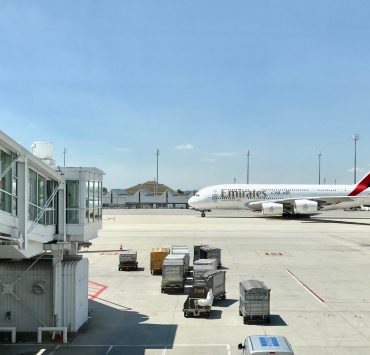
We’ve known since last February that Dubai International Airport (DXB) would be forced to close one of its two runways for a 45-day period in April through to May 2019. Since then the airport has been working out how to manage the closure with as minimal impact on operations as possible – unfortunately, it has now transpired that capacity will drop by as much as 26% at what is the busiest dual-runway airport and busiest airport for international passenger traffic in the world.
Much of the infrastructure around the Southern runway has apparently come to the end of its natural lifespan and is in need of urgent overhaul. It’s surprising that the airport authority can’t just work on a bit at a time around the normal working operations of the airport but with DXB operating 24-hours a day, the operator has probably been forced to take such drastic action.
In fact, it isn’t even the first time the airport has had a runway closure like this – in 2014, DXB had to temporarily close its Northern runway for similar work. Of course, at the time, the airport wasn’t quite as busy as it is today but the closure still had a big impact.
Dubai Airports is hoping to reduce the impact as much as possible by shifting some flights to the Dubai World Central (DWC) campus to the south of the city. Around sixteen airlines will have to move or increase their operations at DWC during the shutdown including flydubai, Wizz Air, Aeroflot, Condor, Air India, Air India Express, Indigo, SpiceJet, Gulf Air, Royal Jordanian, Himalaya Airlines, Ukraine International Airlines, Nepal Airlines, Kuwait Airways, Salam Air, Mahan Air, flynas, and Azur Air.
Dubai World Central will see the number of passenger flights skyrocket by 700% during the shutdown period says the airport authority. The plan is that by using both DXB and DWC, the actual decrease in capacity across both airport’s will only reach around 11%.
Emirates Airline has already announced a slew of flight cancellations during the shutdown period, while other airlines will be using larger aircraft types and amalgamating some services to lessen the impact on the airport.
“At peak times, more than 90 construction vehicles per hour will enter and exit the airport, adding additional traffic to the roads around DXB,” explains the airport operator.
“More than 18,500 truckloads of concrete, asphalt, materials and personnel will need to be transported to and from the airport for the duration of the runway refurbishment programme. More than 1,900 employees will be involved in the project.”
The shutdown of the Southern runway is expected to take place between 16th April to 30th May 2019. During that time, the airport will be using the Northern runway for both takeoffs and landings and it will be running to 96% capacity – which really doesn’t give much leeway for irrops (irregular operations).
“We’re pleased that we have managed to maintain as much choice as possible for customers,” commented Dubai Airports chief executive Paul Griffiths.
“The most significant change for passengers during the period will be the need to confirm the airport that they travelling to or from. That said, we’re confident customers and airlines will be impressed by the speed, efficiency and convenience of Dubai’s second airport.”
Dubai International Airport narrowly missed its annual passenger target for 2018 after handling a total of 89.1 million passengers. India continued to be the #1 destination for passengers coming and going from DXB, closely followed by Saudi Arabia and the United Kingdom.
Mateusz Maszczynski honed his skills as an international flight attendant at the most prominent airline in the Middle East and has been flying throughout the COVID-19 pandemic for a well-known European airline. Matt is passionate about the aviation industry and has become an expert in passenger experience and human-centric stories. Always keeping an ear close to the ground, Matt's industry insights, analysis and news coverage is frequently relied upon by some of the biggest names in journalism.









